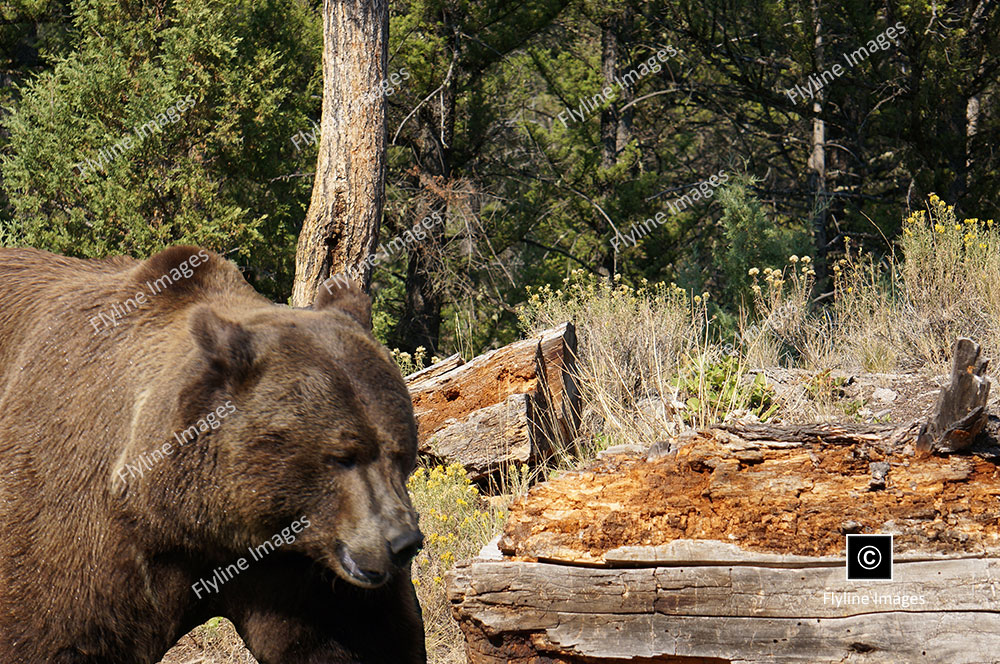Brown Grizzly Bear Feeding Near A Fallen Tree
Grizzly Bear By The Tree
$2.50
Description
Purchase this photo of a beautiful brown grizzly bear, feeding near a fallen tree. The photo was created by the Flyline Images content team. We call it Grizzly Bear by the Tree.
Image & Download Information
For this product, we have provided 3 image size options, Large 2500 x 4000, Medium 1250 x 2000 and Small 625 x 1000. When you purchase this photo, you will receive an email confirmation of your order. That email will summarize your purchase and provide you with the download links for the images and videos you purchased.
ABOUT YELLOWSTONE GRIZZLY BEARS
Grizzly bears in Yellowstone National Park represent a unique and significant segment of North America’s bear population, often referred to as an “island population.” This designation stems from their relative isolation due to surrounding development, which creates a barrier to the free movement of these bears to other regions. Consequently, the Yellowstone grizzly bears are somewhat genetically and ecologically distinct from other grizzly populations. The term “island” conveys the idea of their habitat being an isolated oasis of wilderness amidst human-altered landscapes, underscoring the challenges they face in terms of limited genetic diversity and reduced opportunities for expansion of their territory. This insularity makes their management crucial not only for their survival but also for preserving biodiversity within the park.
Grizzly bears have played a significant role in the cultural and natural history of Yellowstone National Park. Native American tribes considered these bears as powerful and spiritual creatures, often incorporating their presence into their mythology and traditions. Later on, European settlers viewed grizzlies as fierce predators to be feared or hunted for sport. However, with the establishment of Yellowstone National Park in 1872, grizzlies were afforded protection and became a symbol of the park’s wildness and untamed nature.
Today, with an estimated population of around 700 bears, Yellowstone is one of the few remaining strongholds for the grizzly bear in the lower 48 states. However, this number still represents a significant decline from historic numbers due to human activities such as habitat destruction, hunting, and conflicts with humans. As a result, grizzly bears in Yellowstone have been listed as a threatened species since 1975.
To ensure the continued survival of these iconic creatures, various conservation efforts have been implemented in Yellowstone National Park. These include strict regulations on human activities within bear habitat, such as backcountry camping restrictions and mandatory food storage requirements. The park’s management also closely monitors the bear population and their interactions with humans, implementing measures such as relocation or euthanasia in cases of repeated conflicts.
Despite these efforts, challenges remain for the long-term conservation of Yellowstone’s grizzly bears. Climate change is altering their habitat, leading to changes in food availability and potentially increasing human-bear conflicts. Furthermore, issues such as genetic isolation and limited genetic diversity within the population continue to pose a threat to their overall health and survival.





